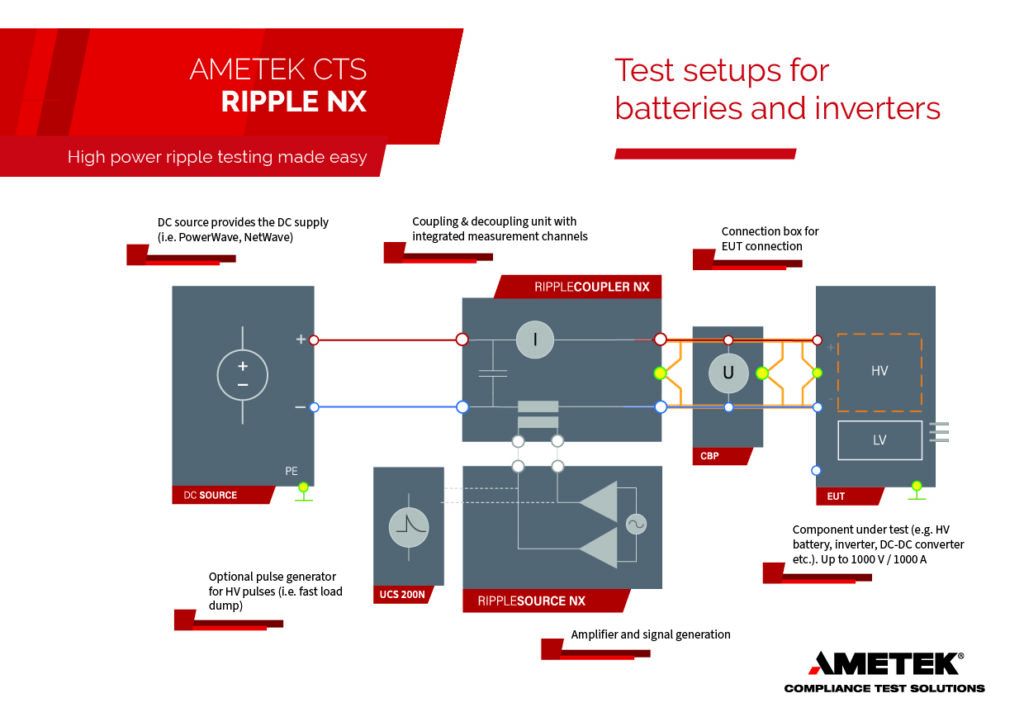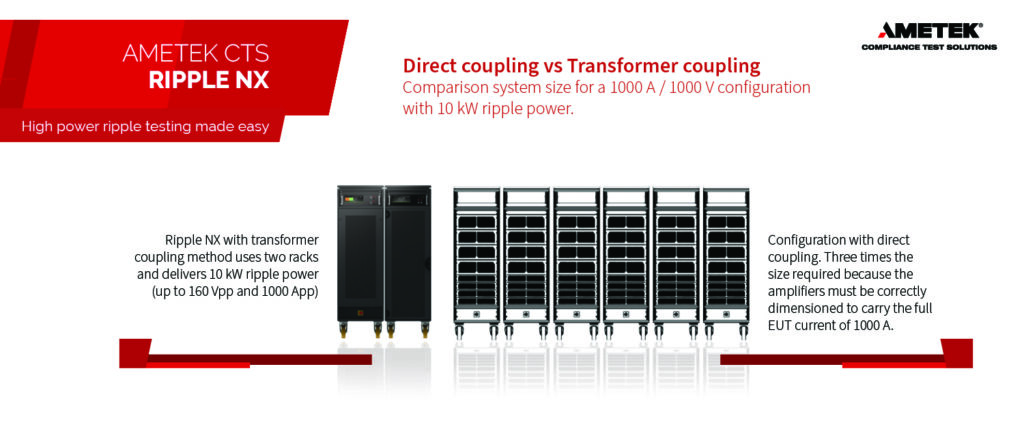Coupling and decoupling describe the way in which a ripple signal is applied to the DC line and how the resulting disturbance is separated from the DC source.
Coupling Method
Different coupling methods (inductive, capacitive, direct) have pros and cons. Ripple NX uses inductive coupling, where transformers couple the ripple signal (AC) on the EUT’s supply lines (DC). Ripple NX transformers are tailored for the ripple application, covering a broad frequency range and offering high efficiency.
For Ripple NX, we selected transformer coupling for its significant advantages – illustrated in the test setup diagram below:

The electrical isolation between high and low voltage sides in the Ripple NX offers a crucial safety advantage. It ensures that overvoltage or overcurrent events on the high voltage side do not propagate to user-accessible parts on the low voltage side, thus reducing the risk of electric shock or other hazards. Additionally, this isolation permits the use of smaller amplifier isolation voltage, which can lead to cost and size reductions. The implementation of this isolation feature is a critical engineering decision that serves to enhance safety while improving overall design efficiency.
Utilizing the inductive coupling method in a test system offers significant benefits over direct coupling. The fact that the DC supply current of the component under test does not flow through the amplifier reduces the required amplifier power and the overall size of the system. This is a direct result of the removal of the DC bias from the measurement system. Additionally, this method reduces balancing currents within amplifier configurations, resulting in a more compact and efficient test system. Furthermore, this approach enables the system to operate over a wider frequency range and with reduced power consumption. Overall, inductive coupling offers a superior test solution that is both cost-effective and high performing.
Direct coupling vs Transformer coupling
Comparison system size for a 1000 A / 1000 V configuration with 10 kW ripple power.

Decoupling DC source
When generating ripple disturbance, it’s important to consider that not all of it will go towards the EUT side. High-quality ripple generators utilize a decoupling element to minimize the effects of ripple on the DC source side. If this is not done correctly, a high ripple current can flow through the output capacitors of the DC source, leading to increased degradation of the capacitors. Moreover, the regulation of the DC source can be disturbed, causing distorted DC voltage and unintended switch-off of the source.
To address this issue Ripple NX includes a 10 mF capacitor bank built with high-quality capacitors that have very low internal resistance and losses. This ensures that the available ripple voltage and current are maximized, while safety is guaranteed by the integrated pre-charge and two redundant discharge circuits. With Ripple NX, you can trust that your ripple testing is being conducted effectively and safely, without any risk of harming your DC source.
Click here for more detailed information about Ripple NX
Content Source: https://www.ametek-cts.com/blog/2023/april/ripple-testing-coupling-and-decoupling






